
From the unwieldy archives of Charles James. All photos by the author unless otherwise noted
Throughout 2017, two archivists are arranging, describing, and rehousing the papers of Anglo-American couturier Charles James, with the goal of making them easily usable by scholars, graduate students, designers, and others interested in studying the James legacy. This blog series gives a behind-the-scenes look at the project's progress.
«The personal and business records of Charles James include a wide range of materials: paper, photographs, sketches, paintings, paper and muslin patterns, art supplies, and other three-dimensional materials, including dress forms.»
Among our responsibilities in processing the collection is to organize the materials physically. This ensures that items are protected from damage through wear and tear, while remaining accessible for researchers to use. Because storage space for processed collections is limited in the Museum's Fifth Avenue building, these items will eventually be stored off-site, at a facility with temperature and humidity optimized for housing archival collections. For all these reasons, we must meet three criteria in housing these materials: ensuring their stable preservation over time, facilitating access to them for researchers, and enabling their safe transportation between the storage facility and our on-site reading room.
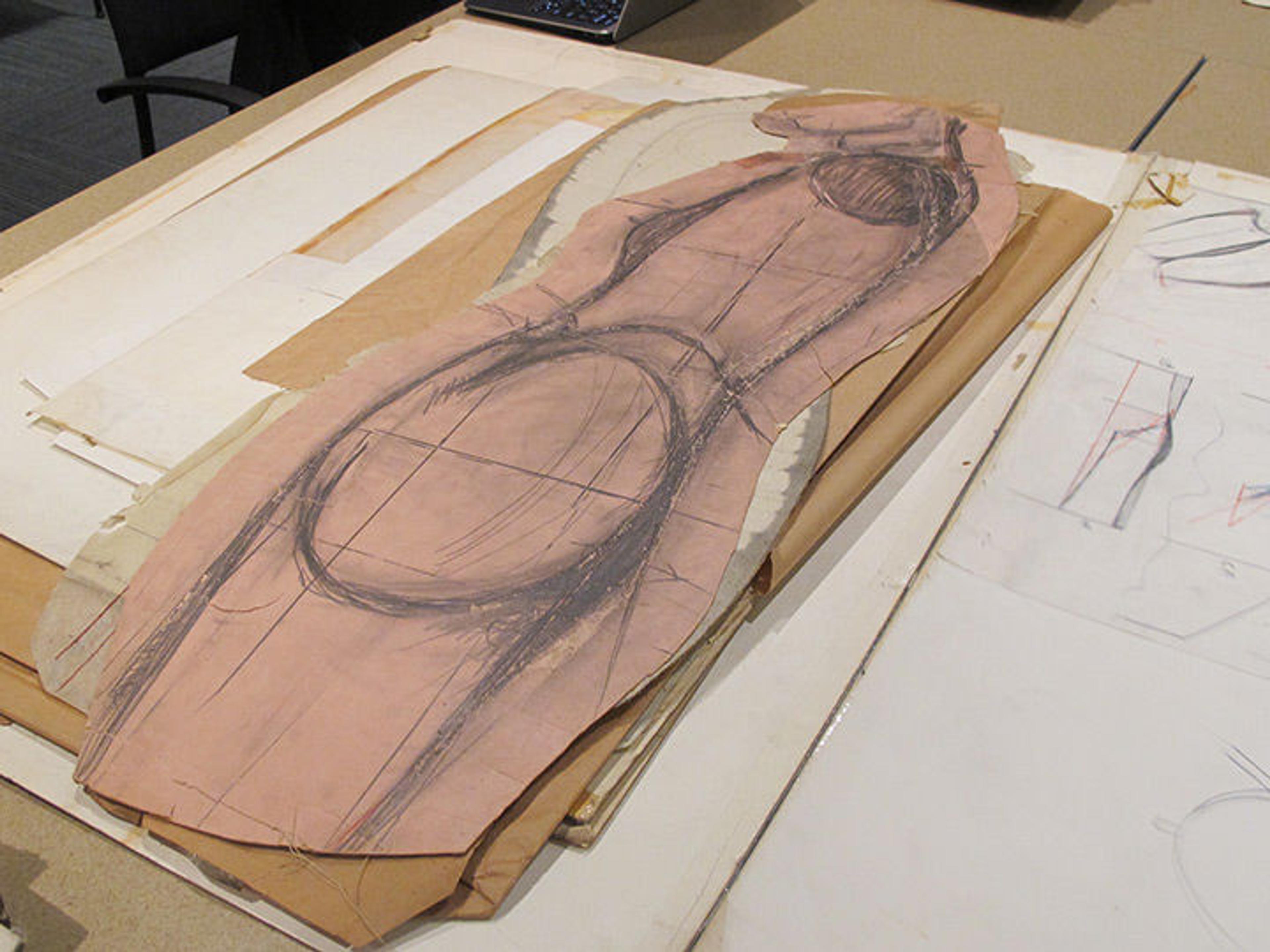
Sketch from the Charles James Papers. Photo by Julie Lê

Plan from the Charles James Papers. Photo by Julie Lê
As seen above, many of the items are orders of magnitude larger than the standard boxes and folders that archivists most often use to contain materials for safe storage and handling.
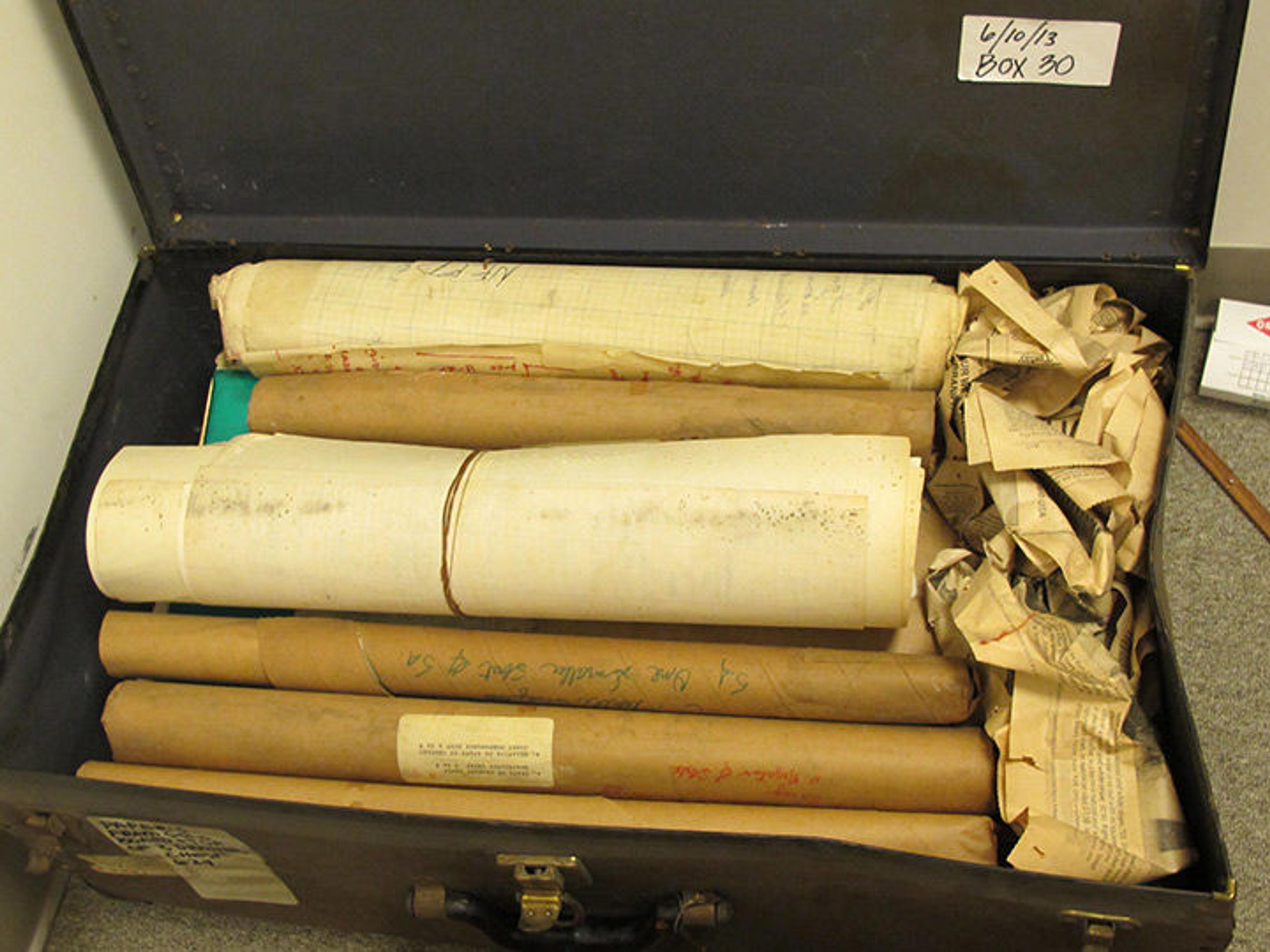
Containers at the intake of the Charles James Papers. Photo by Julie Lê
Some came to us rolled up and would best be stored flattened to minimize the wear and tear of researchers reviewing them.

Document from the Charles James Papers
Some previously folded paper items resemble analogue Excel spreadsheets from the Land of the Giants, presenting challenges both in handling and housing them.
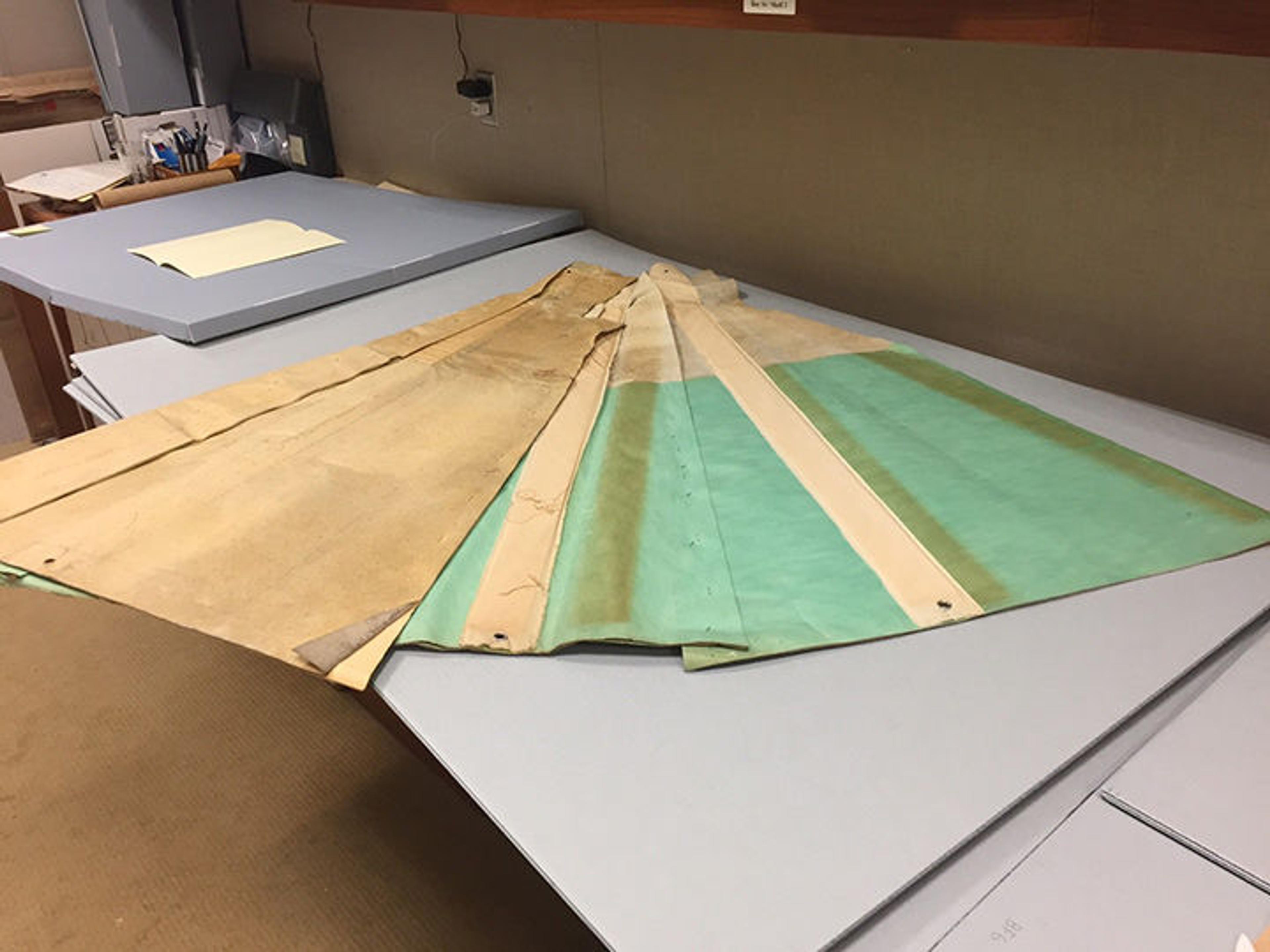
Pattern from the Charles James Papers
Still others fall somewhere between two and three dimensions and are made of typically idiosyncratic Jamesian materials: paper, cardboard, synthetic fabric interfacing, wood battens, metal grommets, and glue.
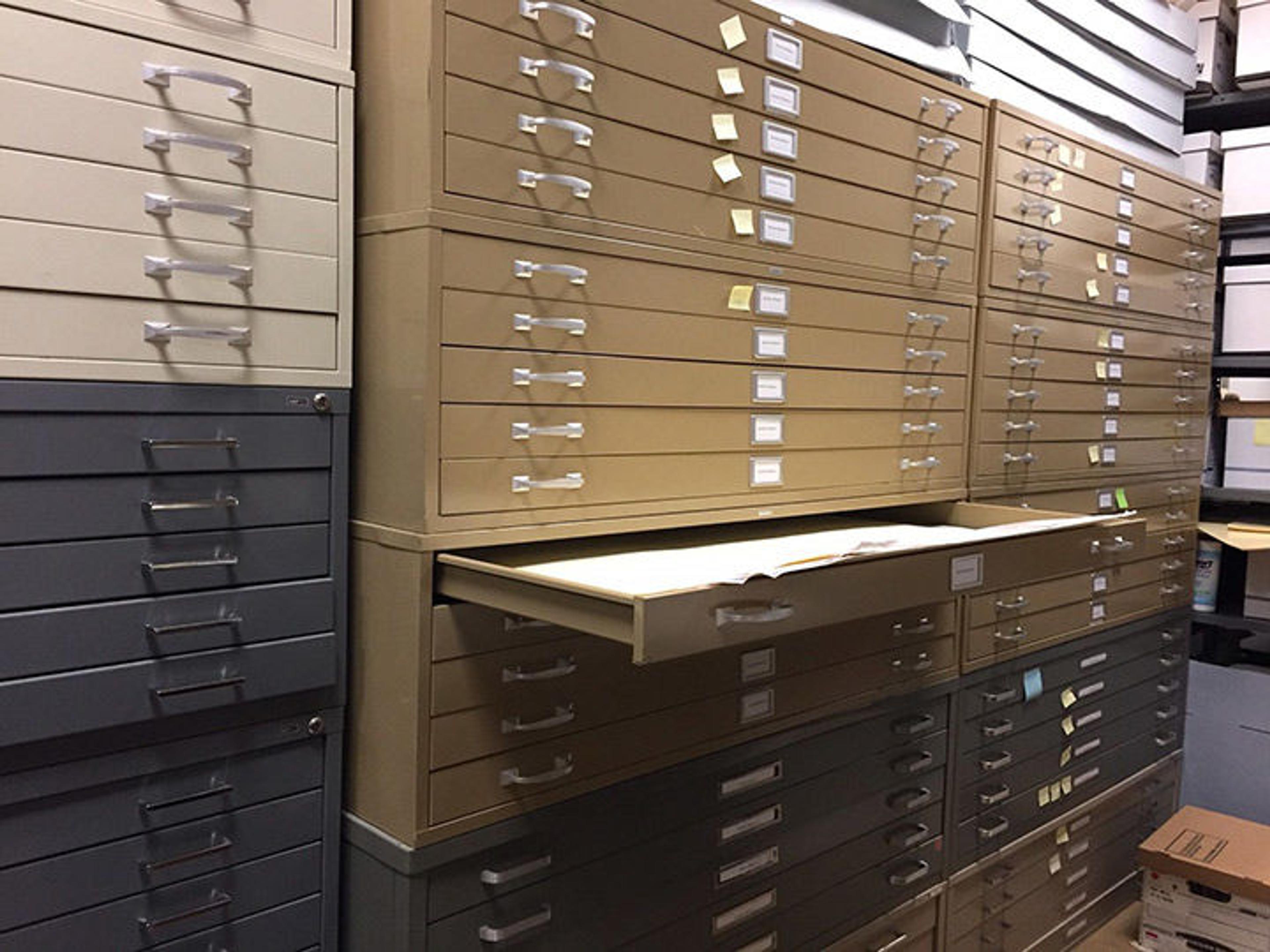
Standard storage for oversized archival material
So what are our options for safely housing these unorthodox items? The standard storage for oversize archival materials is in large folders stacked snugly within flat file cabinets designed for the kinds of printed materials most frequently found in archival collections: maps, posters, architectural plans, and photographic prints. These relatively thin, usually paper-based items are best housed flat, in a temperature-controlled environment, in folders sized for drawers: up to 30 inches by 40 inches.
Such housing would be perfect—but our oversize materials need to be stored off-site. So those giant folders must be safely transportable on and off dollies, through the Museum's corridors, into and out of wheeled bins and trucks as they travel between storage and reading room. The challenge is how to meet those combined needs of preservation and access, using easily sourced materials and without a paper conservator's full-time assistance.
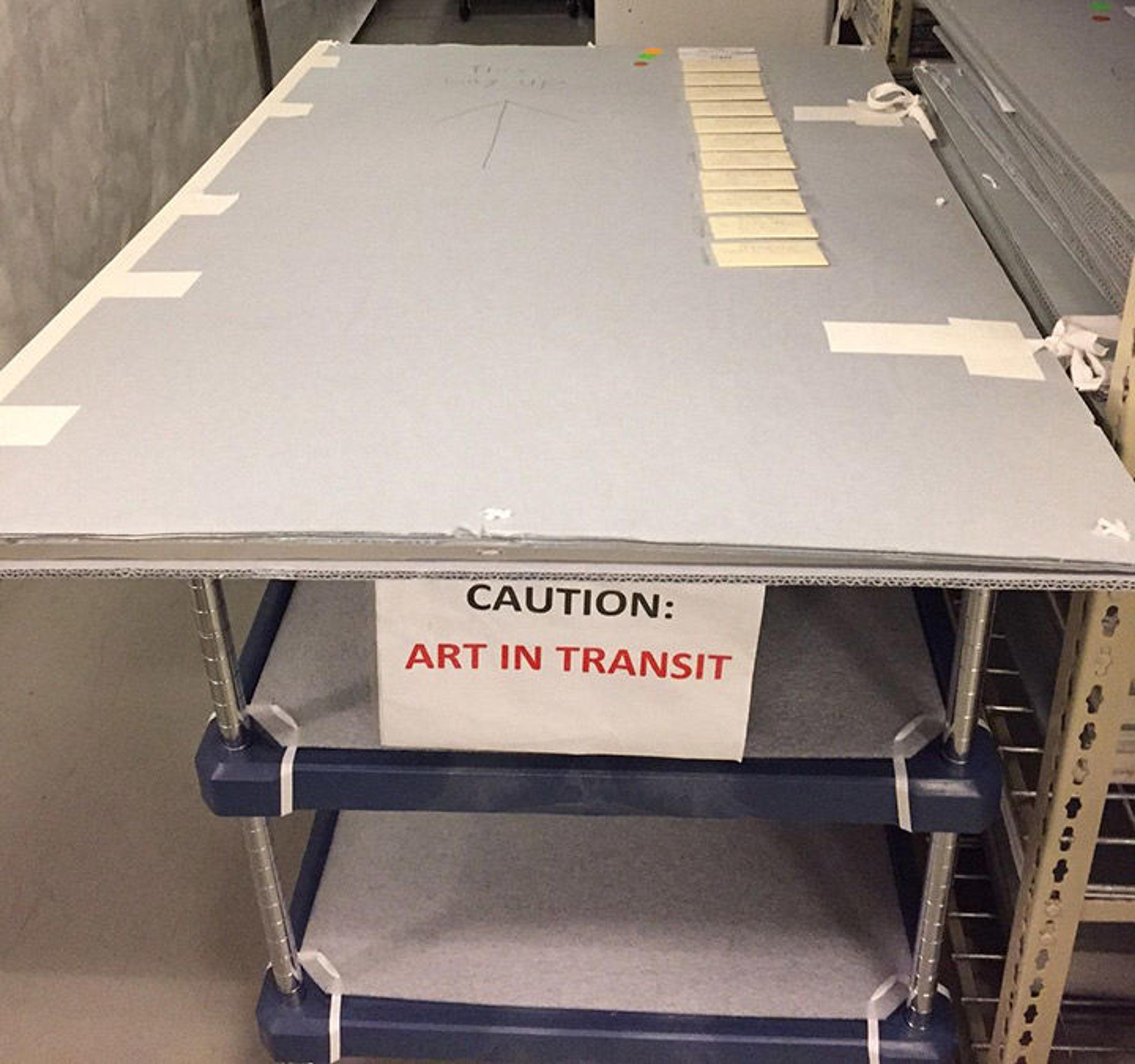
Boardfolio in transit
Among the items in the Charles James Papers are full-size patterns on heavyweight paper, sometimes called slopers, which came to The Met with its acquisition of garments from the Brooklyn Museum in 2009. During his lifetime, James encouraged his clients to donate examples of dresses he had designed for them—sometimes including the patterns—to the Brooklyn Museum.
These multipart, flexible, and foldable items were housed at the Brooklyn Museum in what we've termed boardfolios: bifolds of archival quality corrugated board, hinged on one side with adhesive fabric tape, and fastened shut with fabric ties.
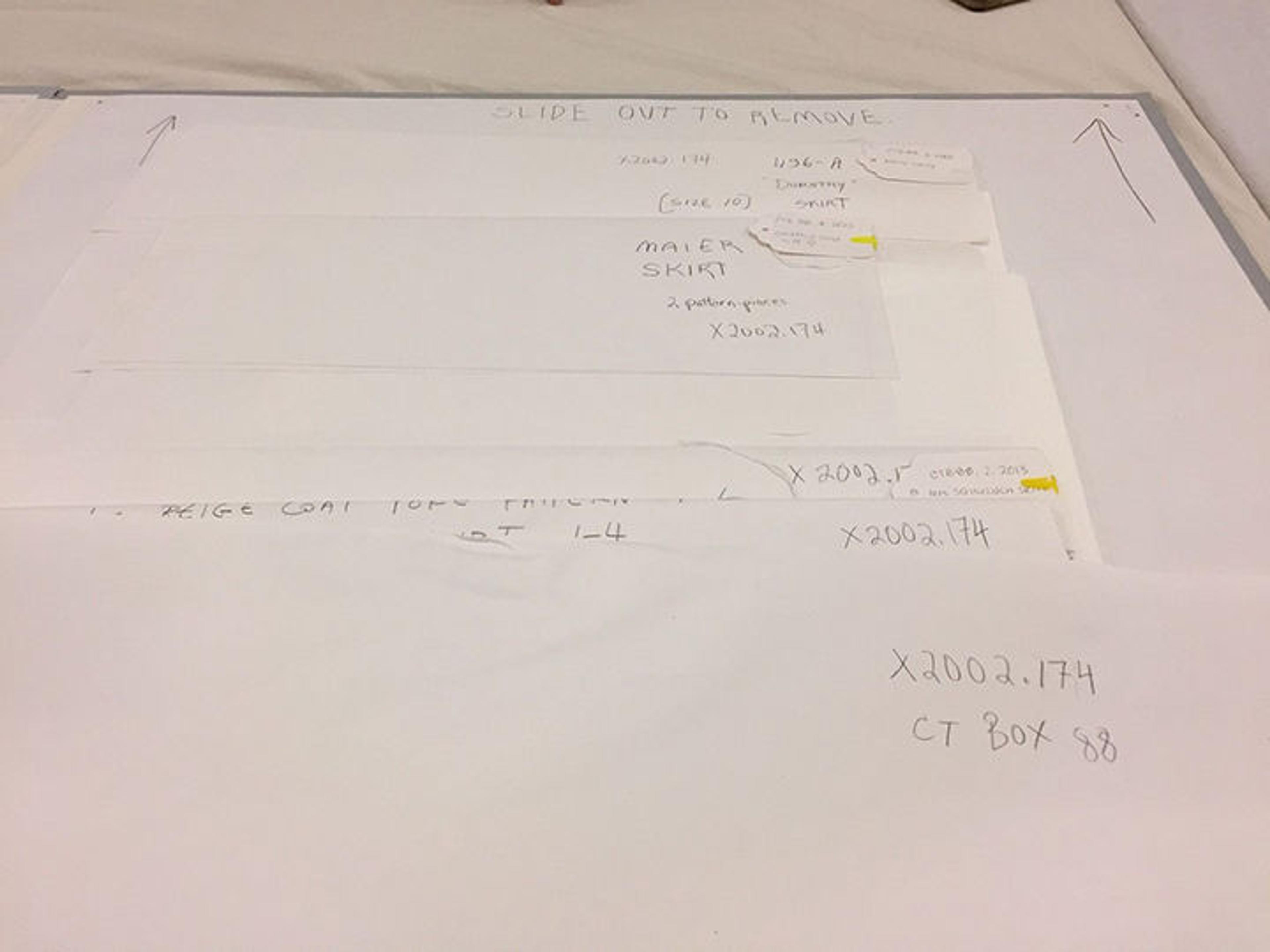
Boardfolio
Their internal architecture, created of neutral paper and board, is designed to keep various sizes of paper objects safely housed and transportable without shifting dangerously.
Bingo! Here were prototype containers for our oversize, unhoused materials. But seeing isn't the same as designing for our specific needs, having on hand the appropriate materials to make them, or being confident and experienced paper architects.
To learn more, we consulted with colleagues in the Museum's Department of Paper Conservation, Department of Photographs, and Registrar's Office. Based on their extensive experience in protecting, housing, storing, and transporting oversized art in many media, they pointed us toward the most easily sourced materials and trusted suppliers, introduced us to standard sizes of items we might need, and generally provided insider tips to save us time and money while maximizing our possibility for success as professional archivists (and amateur art packers!).
Now we had an idea of what we would be building, but questions remained: How many boards would we need, and how much tape? How much paper to make what kinds of enclosures? How to plan an efficient workflow for constructing our planned boardfolios? What skills would we need to make them?
To answer some of those questions, it was prudent to start small. Planning the fabrication of the boardfolios, some of which measure almost three by four feet and others almost four by five feet, was challenging. Creating and modifying prototypes of our proposed end products would be a low-impact way to conceptualize and brainstorm in three dimensions, allowing us to plan our time and materials effectively.
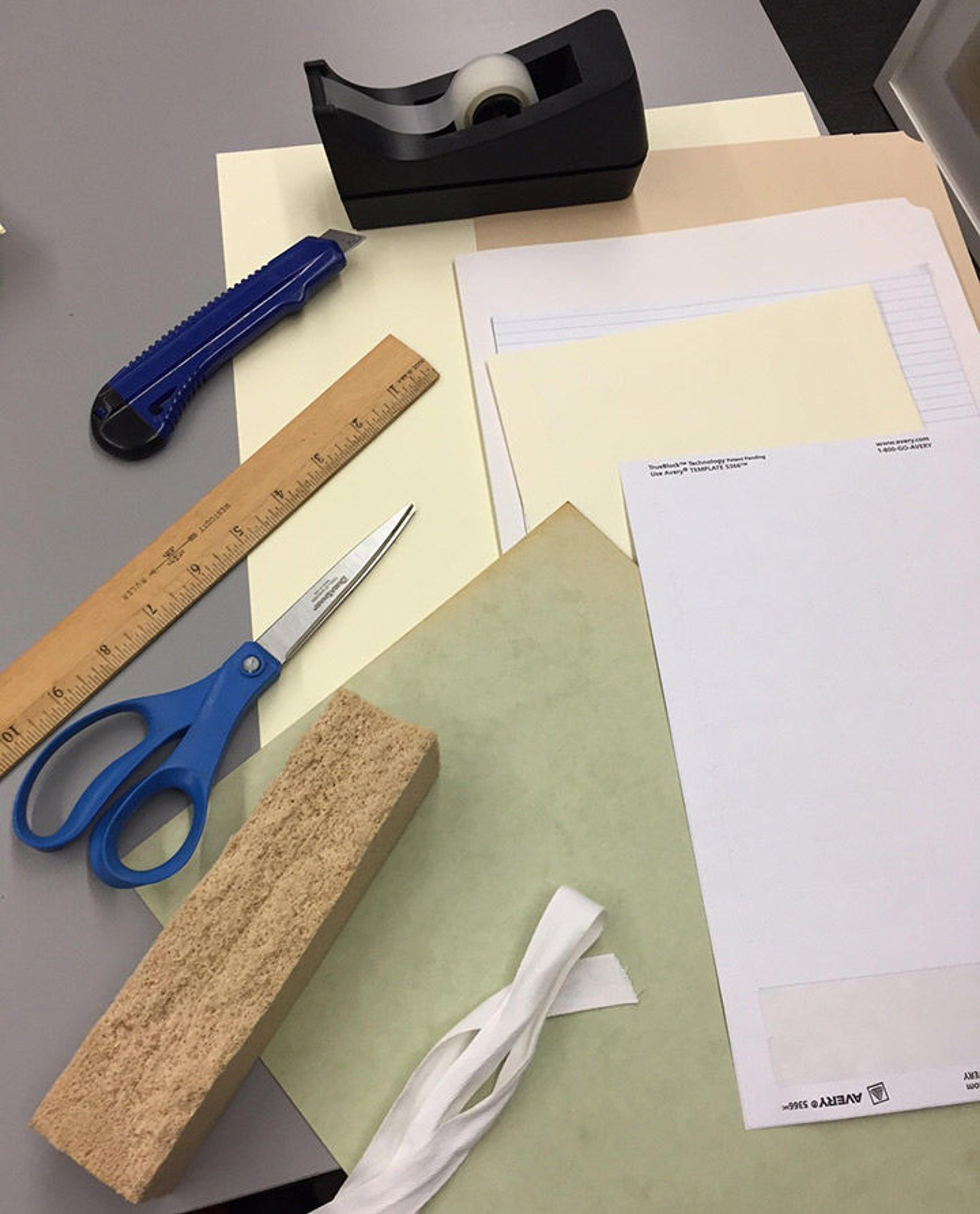
Miniature boardfolio-making supplies
Using scrap materials and supplies from our archives processing room, I began making model boardfolios to house doll-sized versions of our range of materials.
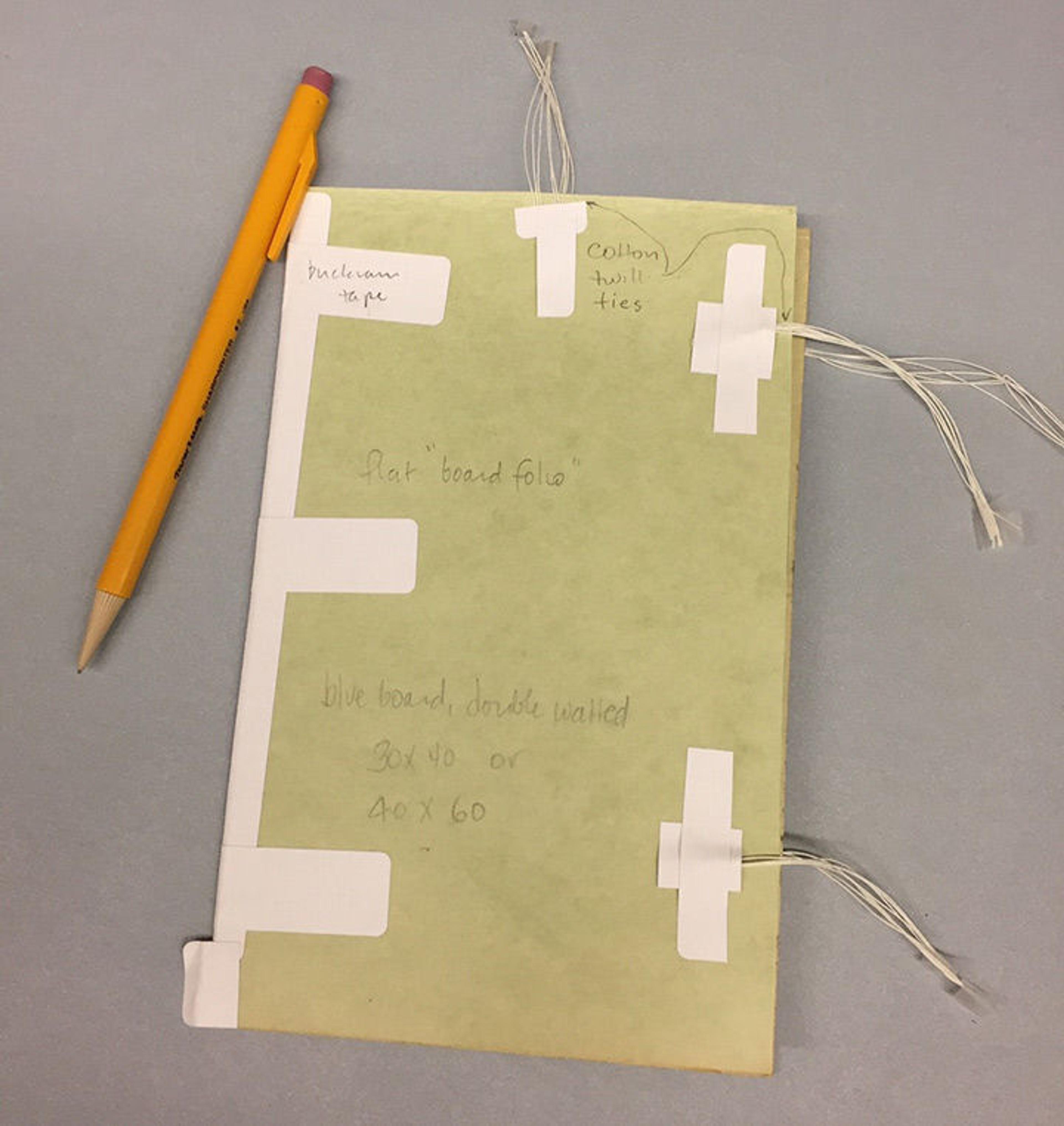
Miniature boardfolio, posing with pencil
The external structure would be based on what we had seen in the Brooklyn Museum examples. Mocking it up in miniature helped me determine how many boards I would need, and to estimate lengths of tape and ties to purchase.
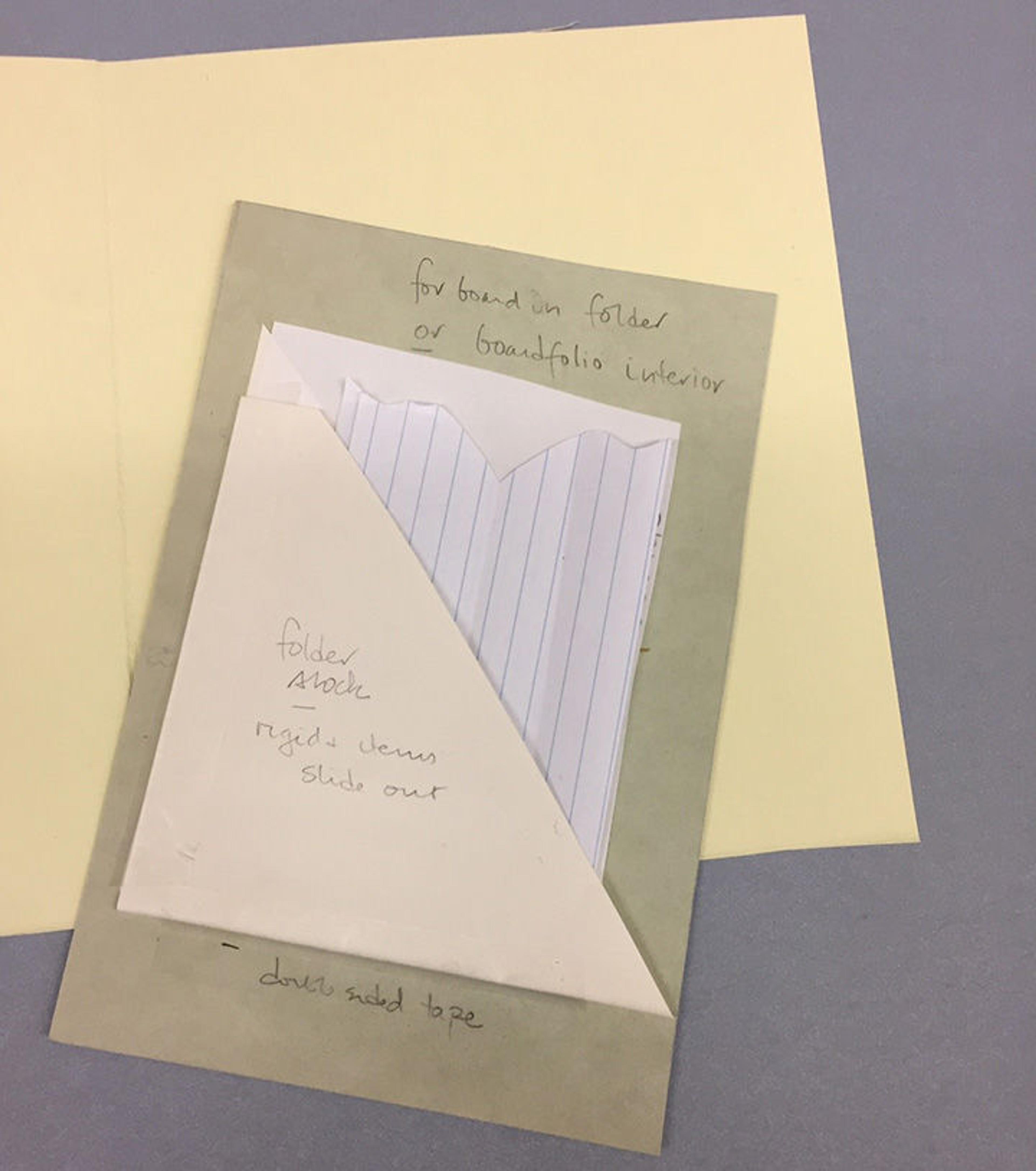
Keeping things snug, one pocket at a time
Based on the types and sizes of items we needed to house, I mocked up miniature interior structures to keep them both snug and accessible: a heavy-weight paper corner into which large items could be tucked . . .
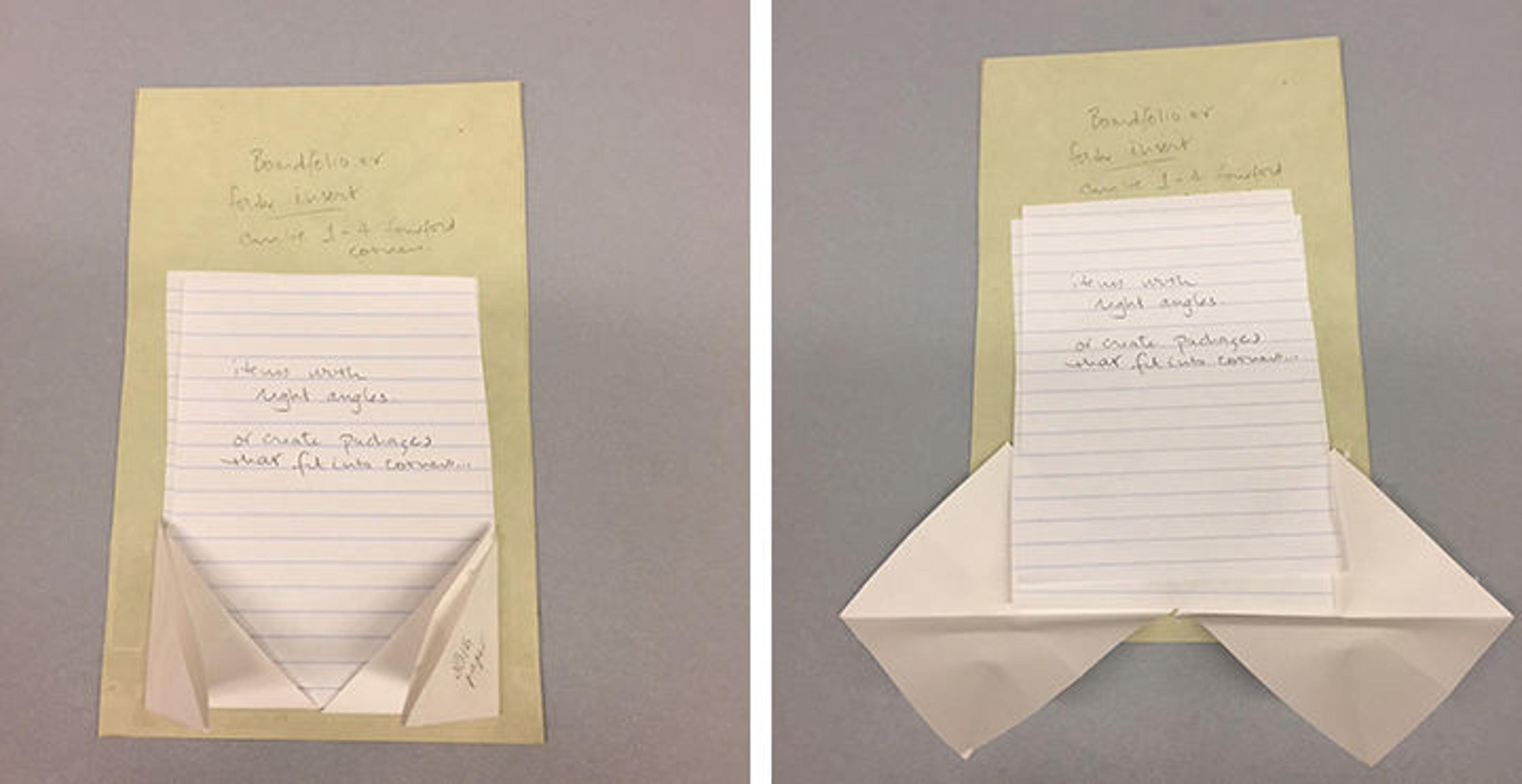
. . . more flexible corners, which open out fully to allow floppier items to be lifted rather than slid out . . .

. . . and pockets that keep wrapped or folded items secure even when moved.
Having experimented in miniature, I felt confident we could scale up and create larger versions of these various options:
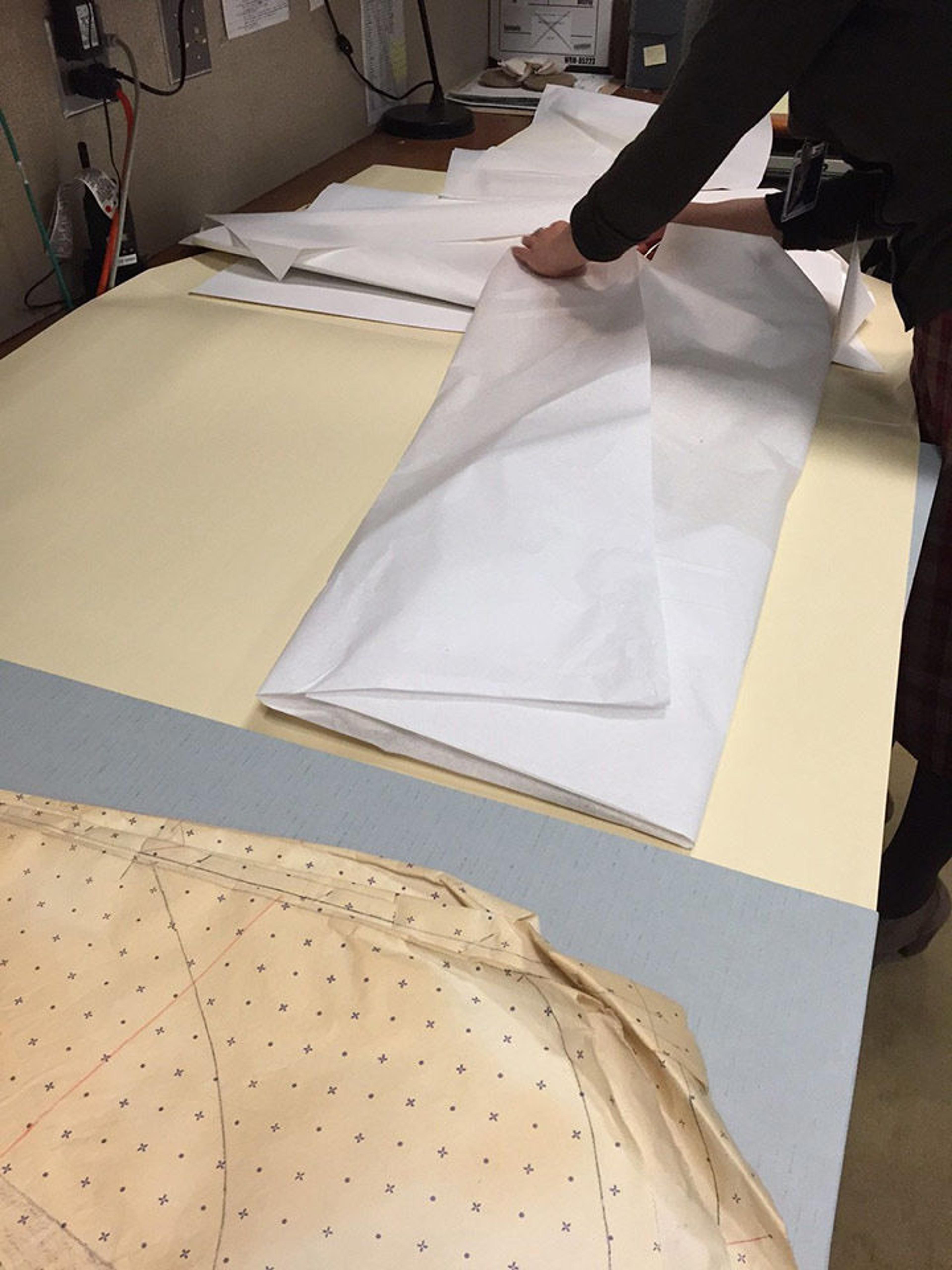
We created enclosures customized for large items . . .
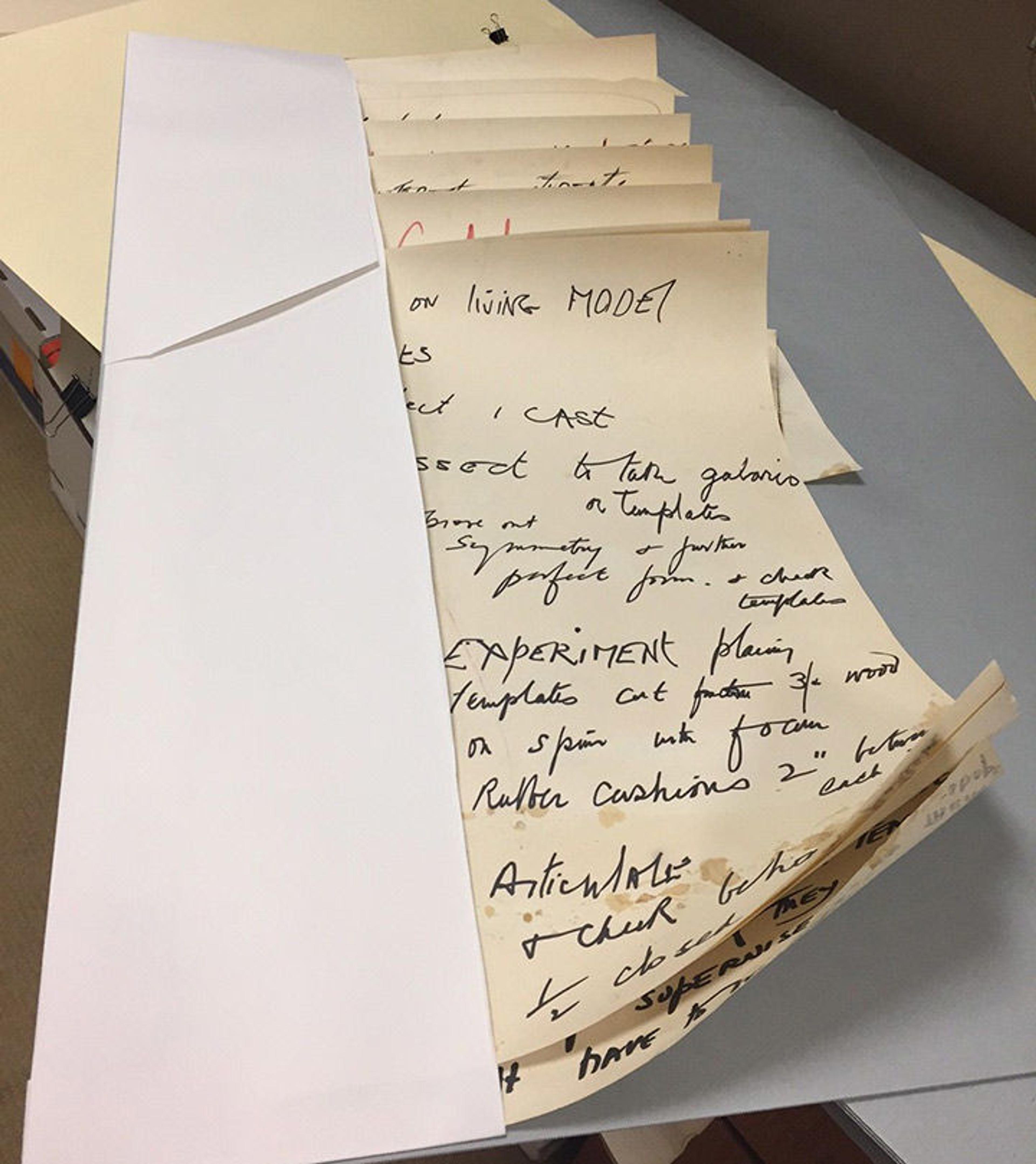
. . . sized pockets to contain and flatten rolled materials . . .

. . . used photo corners for large, non-rigid materials to allow them to be lifted out of their external housing . . .
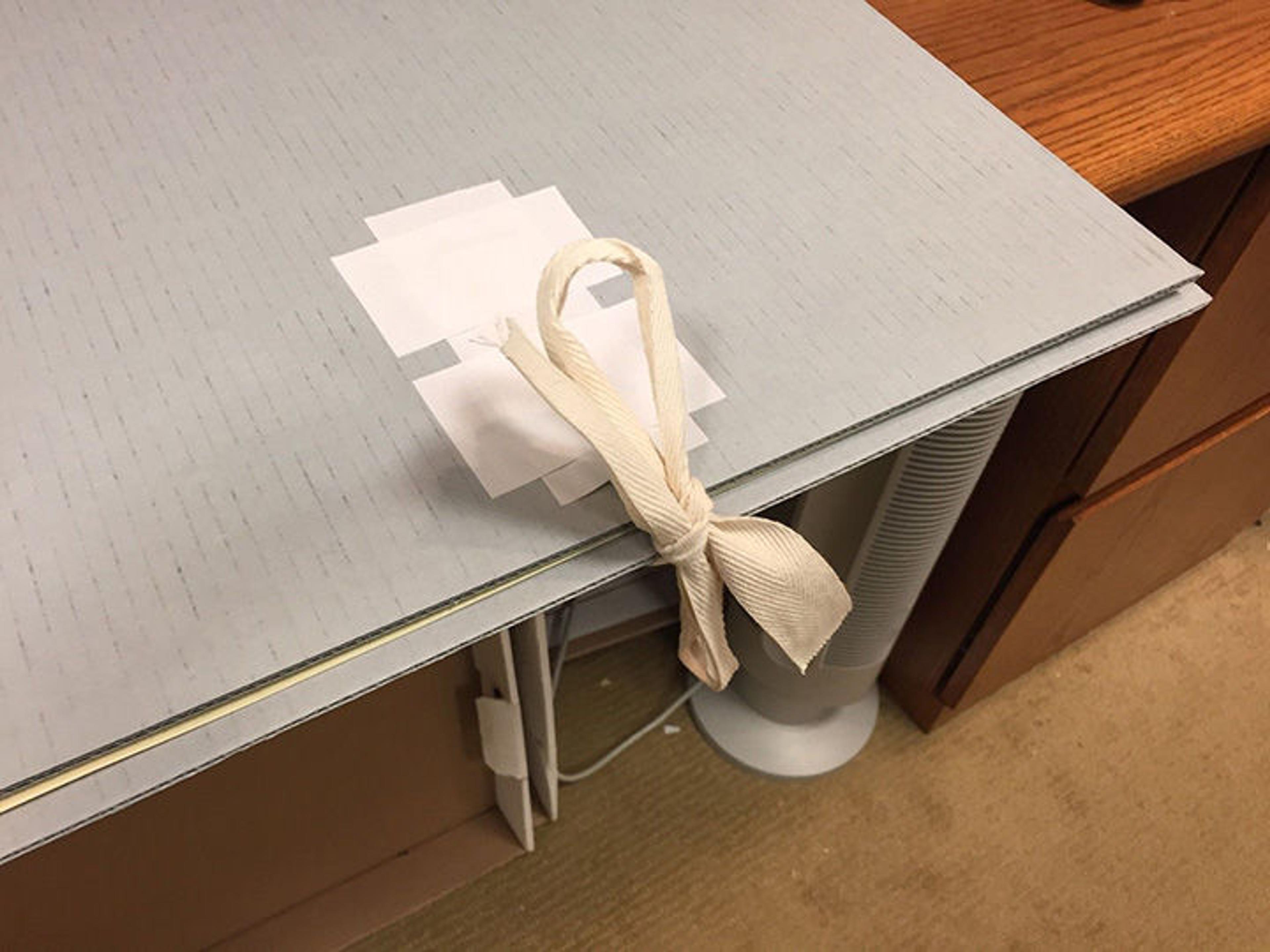
. . . and affixed external ties that were secure enough to withstand travel, flexible for stacking, and easy to access.
We have now constructed almost twenty boardfolios and safely housed the collection's oversized paper, patterns and toiles, photographs, and fabric items. Although large and somewhat unwieldy, these containers can be moved easily and withstand the normal wear and tear of transportation while still protecting their unique contents.
If you've found similar solutions as an archivist in housing unusual materials in your collections, or if you have used items that were creatively conserved and housed in collections you've accessed as a researcher—tell us about it in the comments box below! We look forward to continuing to learn from your experience with similar materials.
Thanks to Yana Van Dyke, Department of Paper Conservation; Meredith Reiss, Department of Photographs; Willa Cox, Office of the Registrar; Pratt Institute School of Information MSLIS/MA candidate and spring Museum Archives intern Safiye Senturk; and our colleagues in The Costume Institute and Museum Archives for their expert assistance with and collaboration in this project.